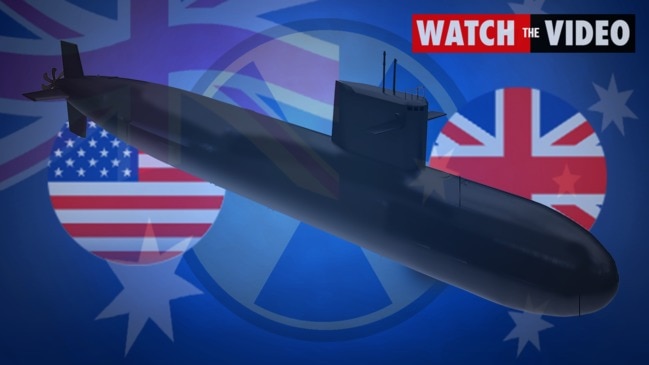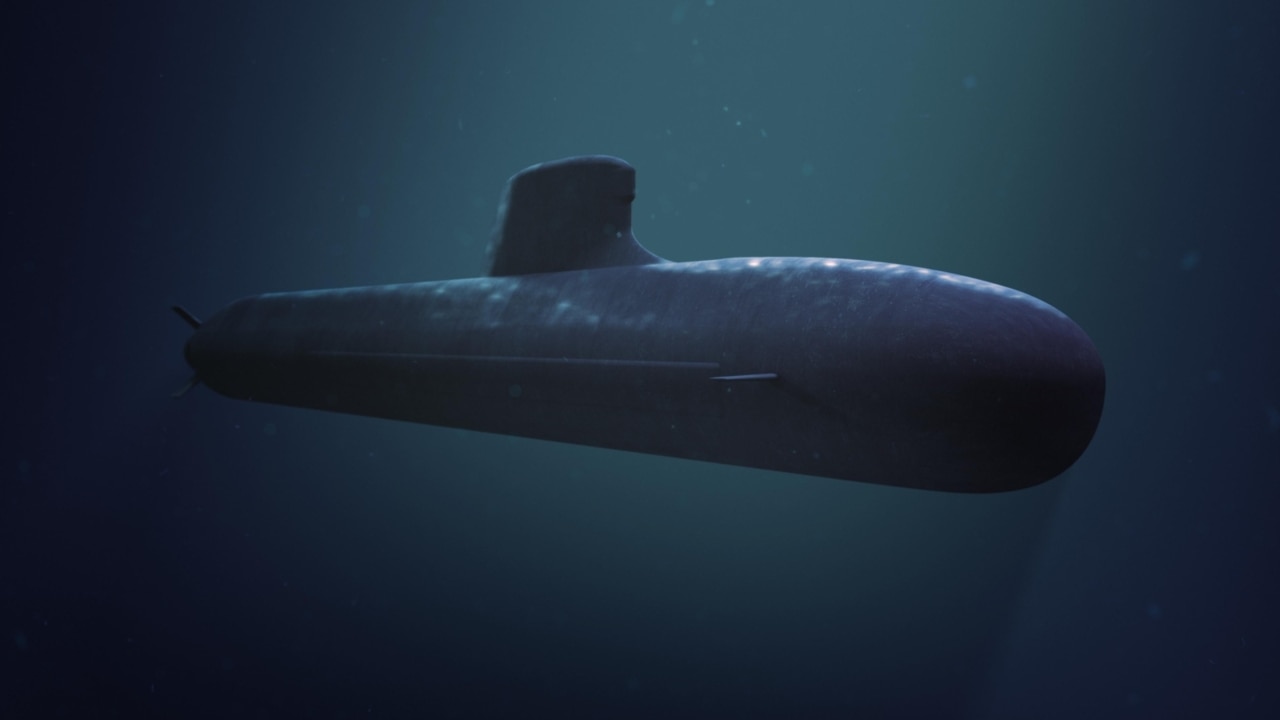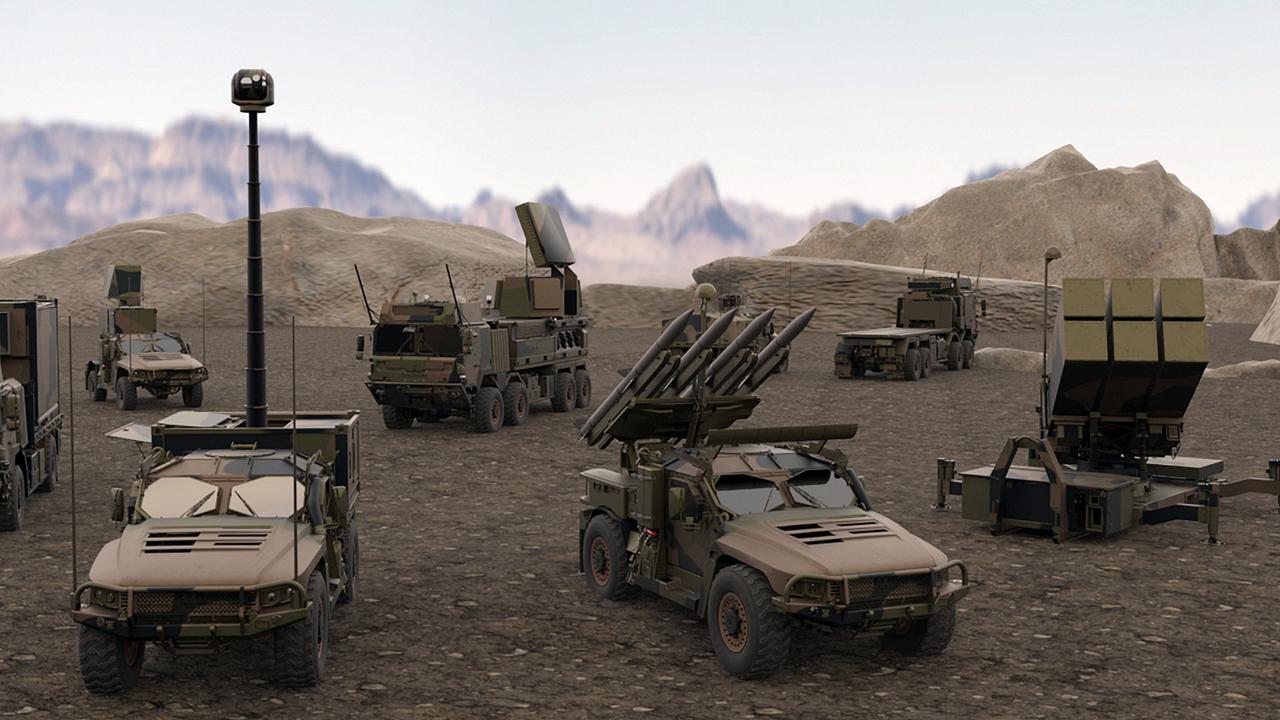French submarine fallout threatens tens of millions of dollars in contracts for SA companies
Australia’s dumping of plans for French submarines will have costly and extensive consequences for SA companies, defence figures predict.

Tens of millions of dollars of work in 200 contracts given to Australian companies on the Attack-class submarine project will be cancelled after the government dumped French shipbuilders Naval Group, a major industry lobby group predicts.
The federal government has started untangling the complex $90bn Attack-class contract, which involves dozens of subcontracts given to local suppliers.
Australian Industry & Defence Network chief executive Brent Clark estimated there were about 200 ongoing subcontracts, with an approximate total value of $30m, associated with the program at the time it was dumped for a new fleet of nuclear-powered submarines.
But government officials, without providing an exact number, believed the actual figure was much lower as construction on the first of the 12 planned ships wasn’t due to start until 2024, and many contracts were years away from being finalised.

In late August, Naval Group revealed more than $10m in contracts had been awarded to more than 100 Australian companies to supply and test various materials including steels and alloys.
A Naval Group spokesman said Australian suppliers were “at the heart” of its plans to build 12 new submarines in Adelaide.
“Naval Group is working through the termination process with the Commonwealth, our suppliers and partners,” he said.
Mr Clark, a former Naval Group executive, raised concerns for the “hundreds” of companies that had invested heavily in new equipment, staff and research to improve their chances of securing work, but had not yet signed a contract.
“People were quite within their rights to be assuming that they had very long term work coming their way,” he said.

“We would like to see those companies diverted into the supply chains of other defence programs very quickly.
“Those businesses can’t just be ignored.”
Both state and federal governments are confident SA suppliers can pivot and reap the benefits of other future defence projects.
Finance Minister Simon Birmingham recognised there would be “some local companies” that expected to secure contracts closer to the construction start date of the Attack-class.
“There will be many new opportunities for companies to take on new work over the next few years to help extend the life of the Collins Class fleet, upgrade the systems of our air warfare destroyers or build the new future frigates,” he said.

More than 2000 Australian businesses had registered their interest with the Naval Group Australia Industry Capability Network portal.
Premier Steven Marshall last month held a roundtable with major defence prime contractors who committed to bringing forward work schedules to provide relief for local suppliers “where possible”.
“There were a number of local SMEs (small and medium-sized enterprises) who had begun the negotiation process with Naval Group but who had not yet finalised contracts, which is of course a disappointment to those companies,” Mr Marshall said.
More than 5000 South Australians are expected to be employed in naval shipbuilding activities by 2030.
SA senator and Opposition foreign affairs spokeswoman Penny Wong said hundreds of businesses had been “left high and dry”.
“(Prime Minister) Scott Morrison needs to provide some certainty now by making clear how Australian industry content will be guaranteed in this new deal, and ensuring these workers and businesses have a role,” she said.
A Sunday Mail analysis of publicly available tender information shows at least 131 work packages for the Osborne Naval Shipbuilding Precinct have been either awarded or still taking applications.
It is expected construction of the shipyard will halt while the government alters designs to accommodate the much larger nuclear-powered submarines, a process that will take up to 18 months.
Calls for Australia-first approach to nuclear subs
By Giuseppe Tauriello
Defence supplier K-TIG is considering development of a hi-tech welding facility that would employ up to 60 workers, but says a stronger and more nuanced commitment to local content in new submarines contracts is needed to get the project over the line.
In the wake of the decision to scrap Naval Group’s $90bn program, K-TIG managing director Adrian Smith is calling on the federal government to “walk the talk” by ensuring locally-owned companies get a fair share of the work on the new nuclear-powered submarines.
Mr Smith said a major flaw in previous commitments to local content in major defence contracts had been the focus on requiring the work be done in Australia rather than by Australian-owned companies.
As an example, Adelaide-based K-TIG had been in talks to sell its pipe welding technology to Naval Group, which had opted to do the hi-tech work in-house in its own facility rather than contract out to a local supplier.
Mr Smith said there was now the possibility of his company winning that work on the new nuclear submarines, creating local jobs and investing in a new $20m welding facility likely near Osborne.
“We think we’re very well placed to help with the construction, we have the technology that can do it and we’re prepared to invest,” he said.

“We would see moving beyond being a technology supplier to actually establishing a dedicated maritime welding facility for pipe work and actually do the fabrication for them.
“That would be an Industry 4.0 standard modern facility creating 50 or 60 jobs locally in Adelaide.
“Naval Group weren’t particularly interested in it because they wanted to do that work in-house, and so we see this as an opportunity to breathe some more life into the plans.”
Mr Smith said the government’s new submarines strategy offered an opportunity to “reset the pendulum” on local industry content.
“We see a big opportunity for the government to stand by its recent rhetoric about lifting the quality of Australian Industry Capability – away from doing the work in Australia and spending dollars in Australia to spending dollars with Australian-owned companies,” he said.
“I think that’s quite a major difference in the policy of the government over the past six to 12 months.
“The rhetoric has been great and I think that’s exactly the right attitude, but they have to walk the talk – it’s now got to be binding clauses in contracts that aren’t just jobs and dollars spent in Australia but actually transferring of meaningful work packages to Australian-owned industry.”

Mr Smith said K-TIG had the nuclear-grade welding expertise to support several welding requirements for the new submarines, and the company’s potential investment in a new local facility was an example of the benefits of getting more locally-owned businesses involved in the defence supply chain.
“It’s about what the leave behind is,” he said.
“If I’m an overseas company and I come in and I do a job, I bring all my intellectual property in, I bring my capability in, I bring my leadership teams in and I do the job and then that project finishes and they disappear, there’s no leave behind – that intellectual property stays within that overseas-owned entity,” he said.
“If you give meaningful work packages to Australian SMEs or large companies, they then develop capabilities which they can apply across multiple projects for multiple primes, and therefore you’re developing sustainable capability.
“That’s where you get a big uptick in leverage and export opportunities that go well beyond the basic project.”
K-TIG recently secured a deal with the UK’s Nuclear Advanced Manufacturing Research Centre to develop a robotic welding cell for fabricating nuclear waste containers used as part of the decommissioning of nuclear power stations across the UK.

Edinburgh base needs work
By Gabriel Polychronis
The Defence Department has a $52m black hole in its budget for vital upgrades to the RAAF base at Edinburgh.
A Commonwealth parliamentary committee will soon hear how the department is waiting on extra funds to build crucial infrastructure that would support the 16th Regiment of the Royal Australian Artillery.
The artillery unit is planning to move from the Woodside barracks to Edinburgh, where it will operate a new missile system called NASAMS, due to become the army’s principal surface-to-air defence weapon.
A whole range of infrastructure, including a new regimental headquarters, training facility, battery facilities, workshops and staff accommodation, must be built.
Construction is due to start late next year and be completed in late 2024.

In a submission to the public works committee, the Defence department presented various options for the project.
It revealed the current budget of $213.9m could only afford a “cost-driven option” that would “restrict the regiment’s operational capability” and “present significant risks to achieving final operating capability”.
A department spokeswoman said identified risks related to increased operational impacts, effects on existing Defence infrastructure at Edinburgh and risks relating to the duty of care for Defence personnel.
Defence is hoping for an extra $52m to pursue a “reduced risk” option, which would provide new facilities and upgraded engineering infrastructure allowing the regiment to operate the new missiles safely.
“(This option) excludes local emergency generators, however, presents a reduced risk to the air defence capability that can be acceptably managed by Army,” the committee submission states.
The spokeswoman said the budget was expected to be increased to $266.1m, pending approvals.
The Public Works committee will discuss the project on October 13.


It would still be a compromise on the full scope of the project, which would cost $271m and include emergency generators.
The planned facilities will cater for the regiment’s training and sustainment duties for the new missile system as part of the Joint Integrated Air and Missile Defence capability.
The regiment’s current Woodside barracks are not “not fit for purpose and cannot enable an acceptable operating level” of the new system.
Dubbed LAND 19 Phase 7B, the $2.5bn program led by Raytheon Australia will overhaul the Army’s current short-range missile capability.
The National Advanced Surface to Air Missile System (NASAMS) is used by nine countries, including the US, Norway, Finland, Spain and the Netherlands.
It will replace the army’s man-portable RBS 70 launchers with a fully networked and distributed missile system, which will include new radars and command and control systems mounted on the Hawkei fleet of light armoured four-wheel-drive vehicles.
Development of NASAMS for Australian use and its final assembly will be done at Raytheon’s Centre for Joint Integration at Mawson Lakes.
Revealed: Secret ingredient for Hunter-class frigate
By Gabriel Polychronis
A hi-tech tool used by engineers working on the Hunter-class frigate design can be revealed for the first time.
The Sunday Mail was given an exclusive look at BAE Systems Australia’s highly sensitive “visual suite” at its Osborne shipyard – a theatre-like room with a detailed projection of a perfect-scale frigate model.
The tool allows engineers to collaborate in near-real time with other designers across multiple sites all over the world, including BAE’s base in Glasgow, Scotland.
Engineers can also use the suite to host meetings with suppliers.
Chris Muskett, chief engineer of the Hunter-class frigate program, said the virtual model gave designers an “unprecedented opportunity” to refine the ship’s specifications.
“The visualisation suite’s connectivity over multiple global sites enables us to work together with all the latest technical data, without being physically together,” he said.
“The digital design (process will) ensure the Royal Australian Navy maintains its competitive edge.”

Based on the UK’s Royal Navy Type 26 frigate, the design of the Hunter-class is not yet “mature” enough to begin construction.
An 18-month delay on building the first of the ships is partly due to the Covid-19 lockdown in the UK preventing senior engineers using their own visual suites in the UK.
Construction is expected to begin in 2024, instead of late next year.
BAE’s Osborne shipyard general manager Jim Cuthill warned starting construction with an immature design could lead to workers’ morale suffering after repeating tasks and rebuilding ship elements many times due to late design changes and updates. “I would use the phrase that it’s as if we’re going a bit slower to go fast,” he said.
“This aligns the Hunter-class Frigate Program with international best practice for ship-building. The impact of the UK Covid-19 situation on the Type 26 program in the UK has also created significant challenges.
“Previous ship-build programs have taught us that going into manufacture with immature designs can result in a very inefficient build program with the potential for significant rework.”
Mr Cuthill said the Hunter-class program was more than halfway through what is known as a Systems Definition Review, done in part to integrate commonwealth-mandated changes, including to combat systems.
He said some elements of the design must be significantly changed to comply with Australian government requirements.





